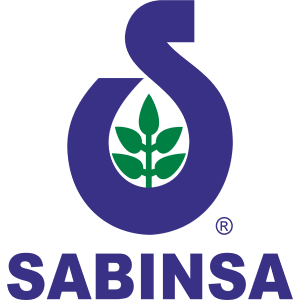Direct marketing and selling are becoming key words in the Indian industry as both the concepts are fast catching up and they are rapidly emerging as new business channels. They have potential to enhance the economic growth trajectory. In India, products related to wellness/healthcare contributed to a lion’s share in the total sales revenue of the organized direct selling industry, by a share of 47%, while globally product-wise share in global revenue generation in 2011 of wellness was 25%.
The direct selling market in India is estimated to be over Rs 72 billion. According to a survey made by PHD chamber of Commerce in 2013-14 the size of the industry is estimated to leap-frog by 2019-20 scaling up to Rs 2,37,421 million from Rs 74,722 million in 2013-14. The direct selling market in India is estimated to be over Rs 72 billion. According to a survey made by PHD chamber of Commerce in 2013-14 the size of the industry is estimated to leapfrog by 2019-20 scaling up to Rs 2,37,421 million from Rs 74,722 million in 2013-14.
Direct marketing and selling establishes direct reach as well as personal and one-to-one relation with the customer. In healthcare and wellness this has more significance and importance from the customer’s point of view as the needs of different customers are different. “With back up of solid scientific evidence and clinical documentation, direct marketing is the quickest means of reaching to the population that well deserves this,” said Shaheen Majeed, Director, Sami-Sabinsa group of companies.
When it comes to direct marketing, businesses communicate with their customers through a multitude of channels like mail, email, phone, and in person. Direct marketing messages involve a specific ‘call to action’, such as ‘Call this toll-free number’ or ‘Click this link to subscribe’. The results of such campaigns are immediately measurable, as a business can track how many customers have responded through a message’s call to action. The specific call to action helps to know exactly how many people responded to a direct marketing effort. Among the various channels that are used for direct marketing are e-mailers. But, non-targeted blanket mailings arrive daily in many mailboxes and e-mail accounts. However, despite the frustration over ‘junk mail’ and ‘spam’, a high enough percentage of such mailings are acted upon. It has been found out from a study that among African-Americans who receive direct mail, some three-quarters take the time to read what they receive instead of just throwing it away; while Asian-Americansopen and read about 90% of all their direct mail. A key to the effective direct marketing is to start with a proper data. The data is analyzed to create messages and offers that are likely to be relevant to these customers or prospects.
The marketing efforts are then followed by direct sales. The direct sales have many advantages. It can lead to disintermediation, reduction in transaction costs and bridging the gap between consumer prices and manufacturer prices, facilitated by the use of technology. Urbanization, income and consumption growth, higher female work participation rates and dual income families increase the importance of transaction costs and their decline. According to Majeed, though India has been viewed as a holistic place when it comes to care and treatment, there seems to be a growing gap in the conversation of supplementation. Direct marketing: future of nutra and healthcare 07 JUN,2016 | Mumbai Direct marketing and selling are becoming key words in the Indian industry as both the concepts are fast catching up and they are rapidly emerging as new business channels. They have potential to enhance the economic growth trajectory. In India, products related to wellness/healthcare contributed to a lion’s share in the total sales revenue of the organized direct selling industry, by a share of 47%, while globally product-wise share in global revenue generation in 2011 of wellness was 25%. The direct selling market in India is estimated to be over Rs 72 billion. According to a survey made by PHD chamber of Commerce in 2013-14 the size of the industry is estimated to leap-frog by 2019-20 scaling up to Rs 2,37,421 million from Rs 74,722 million in 2013-14.
This may be due to the uptake in pharmaceutical drugs and the low awareness of alternative and complementary nutritional supplements. “The direct marketing approach can lessen this gap, bring that conversation home and with a solid research focused products, companies like the Sami Direct group, you can offer your friends and family a product you can trust for its safety and efficacy”, he said. He added, “The fast pace of growth seen in the dietary supplements, health supplements and functional foods which encompass nutraceutical market, has increased the health, food and medicine related legal compliances in India. This trend has encouraged the e-commerce space dealing in healthcare and nutraceutical products.”
The direct selling can create additional income opportunities to a large number of people and promotes micro-entrepreneurship. Over 5 million direct sellers are estimated to be involved with direct selling of different products, including healthcare and wellness. It also offers self-employment opportunities to a large number of women. It gives them the flexibility to manage their time and balance their work and personal lives. In 2013-14 the direct selling is estimated to have provided self-employment to 3.4 million female distributors. The industry also generates a large number of jobs. Majority of the direct selling companies outsource production, packaging and distribution of their products, thus generating direct employment across the value chain.
In this month, NuFFooDS Spectrum presents two important viewpoints about the direct marketing and selling of nutra products and wellness and healthcare products. They explain the importance of face to face communication in healthcare and opportunities and challenges for direct marketing and sales industry in healthcare. There is information about and the current status of two ingredients also.








